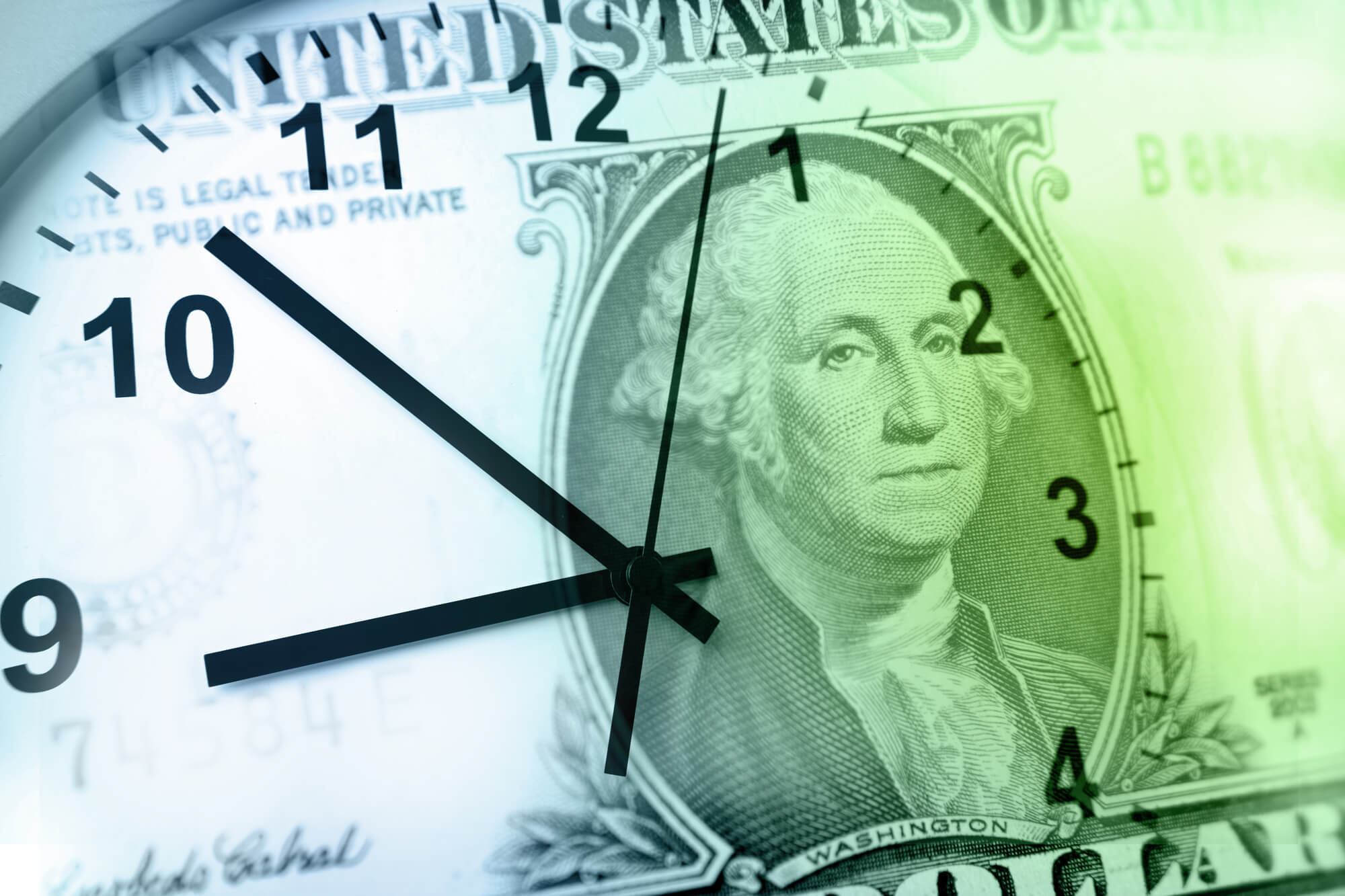If you’re charting your way to financial independence but don’t seem to be getting there any quicker, you may be experiencing lifestyle inflation. In this article we talk about what it is, its impact on your timeline to financial independence, and a 5-step strategy on how to avoid it.
So if you’re ready, let’s start the climb.
What is Lifestyle Inflation (Lifestyle Creep)?
Lifestyle inflation – also known as lifestyle creep – is when a person’s spending increases as the amount of disposable income increases. Disposable income is the income you take home after taxes and is meant for both essential and nonessential expenses. Discretionary income is the money left after paying taxes and essential expenses. For example, if your take home pay was $3,000 a month and your essential expenses were $2,000 each month your discretionary income would be $1,000 ($3,000 disposable income – $2,000 essentials = $1,000 to spend on nonessentials).
As a person continues to grow their career, so does their paycheck. As promotions and raises occur, so does the amount of disposable income. Lifestyle inflation occurs when your spending on essential and nonessential expenses increases in accordance with your income. Continuing with our example, if your take home pay grew to $5,000 a month and your essential expenses grew to $3,000, you’d now have $2,000 of discretionary income. If spending on essentials and nonessentials increases, you are experiencing lifestyle inflation.
Parkinson’s Law
There are many reasons for lifestyle inflation – keeping up with the Joneses, insufficient spending willpower, inability to prioritize long term happiness over immediate gratification, and so on. Another way to look at this phenomena, however, is through the lens of Parkinson’s law.
Parkinson’s law is the idea that work expands to fill the time available for its completion. The same adage can be applied to money and spending. Your spending tends to expand in proportion to the amount of money earned and available to spend. This means that people generally will find ways to spend more as they make more.
This happens gradually. A student, for example, may live in cheap housing through college education years. Their income is little to none, and their money is spent to support their lifestyle. Their focus in on meeting their needs, and the little money leftover is spent on saving to pay down student loans and the occasional pizza during final examinations. Upon entering the workforce post-graduation, a person’s income will increase. So too, generally, does their spending.
This individual likely moves out of college housing and into an apartment to be closer to work or friends. Their cost of living goes up. Perhaps the job requires some new clothing to appear more professional, and as a result their clothing costs increase. Maybe now they eat out with colleagues to begin networking, and their food costs increase, and so on.
This sort of lifestyle inflation happens all the time, and it happens gradually. If kept unchecked, it can be detrimental towards reaching your goal of financial independence.
Is Lifestyle Inflation Bad?
In general, it’s okay to enjoy a reasonable standard of living. You don’t need to pinch every penny, and money can and should be spent in ways to increase your happiness. However, after finding your spending level (i.e. the amount of money that provides for your needs and some wants, without experiencing diminishing returns or creating waste), you should find more purposeful ways to spend your money instead of inflating your expenses. Inflating your lifestyle otherwise elongates your timeline to financial independence.
Here’s what we mean by that.
Lifestyle Inflation Increases Your Timeline to Financial Independence
When it comes to lifestyle inflation, it doesn’t just apply to your spending. It can also apply to your ability to reach financial independence. If your spending increases, you won’t be able to build wealth more quickly, because you’re spending money you could otherwise be saving and investing.
Let’s say that your income is $50,000 annually. That means you would have $4,166 to spend each month. If you were leveraging a popular percentage based budget, like the 50/30/20 budget for example, you’d be spending 50% on necessities, 30% on wants, and 20% on savings. That would be $2,083 on necessities, $1,250 on wants, and $833 on savings. At this rate, it would take you 36 years to reach financial independence (assuming a current zero net worth and 5% annual returns).
| Annual Income | Annual Savings | Savings Rate | Annual Expenses | FI Number (Annual Expenses / 4%) | Years to FI |
| $50,000 | $10,000 | 20% | $40,000 | $1,000,000 | 36 |
Now, let’s say that you got a new job and your income grew to $75,000 annually. That means you would now have $6,250 to spend each month. If you were still applying the 50/30/20 rule, your budget would grow to $3,125 for necessities, $1,875 for wants, and $1,250 for savings each month. While the amount of money you’re saving grows by an extra $417 each month, you’re not making any additional headway on your journey to financial independence. Your current rate of spending still keeps you at an expected 36 years to reach financial independence.
| Annual Income | Annual Savings | Savings Rate | Annual Expenses | FI Number (Annual Expenses / 4%) | Years to FI |
| $75,000 | $15,000 | 20% | $60,000 | $1,500,000 | 36 |
What’s going on here? You’re saving 50% more each month than you were before, but you’re not getting to financial independence any faster. Where are things going wrong?
Well, your financial independence number is calculated based on your current annual expenses, multiplied by 25. This is a general rule, based on a 4% withdrawal rate so that you don’t run out of money in retirement. Meaning, if your expenses increase, you financial independence number increases as well. Instead of a $1,000,000 financial independence number at your $50,000 income ($40,000 annual expenses), it becomes $1,500,000 at your new, higher $75,000 income ($60,000 annual expenses) because your savings rate hasn’t changed (20%). Your timeline to financial independence hasn’t effectively changed, but it’s longer than it otherwise could be if you hadn’t inflated your lifestyle.
Decreasing Your Timeline to Financial Independence
However, if your increased income resulted in an increased percentage of savings, you could reach financial independence more quickly. Let’s continue with our example above.
If your income grew to $75,000 but you held your expenses the same as they were when you were making $50,000, your timeline to financial independence would decrease to 18 years. That’s 18 years less than before! And 18 less working years! All because you were able to find an appropriate spending level for you, and maintain it despite the increase of your disposable income.
To break that down more clearly, that means you would still have $6,250 to spend each month. However, if you kept your expenses at $2,083 for necessities and $1,250 for wants ($40,000 annual expenses) your savings rate would increase from 20% to 47% ($6,250 – ($2,083 + $1,250) = $2,917; $2,917 / $6,250 = 0.466 or 47%). If you were to save and invest this money, you would be able to reach financial independence in 18 years.
| Annual Income | Annual Savings | Savings Rate | Annual Expenses | FI Number (Annual Expenses / 4%) | Years to FI |
| $75,000 | $35,000 | 47% | $40,000 | $1,000,000 | 18 |
The more you make and save, the faster you will reach financial independence. Avoiding lifestyle inflation doesn’t mean cutting back all of your spending. You can still spend money, but it should be optimized towards spending on a life that makes you happy. And since there is a diminishing return on money, spending more as you make more doesn’t equate to a happier lifestyle. As you make more you should save and invest more. As a result, you’ll be able to enjoy your ideal lifestyle without creating waste and without diminishing returns for much, much longer.
How to Avoid Lifestyle Inflation
While it’s a great idea to avoid lifestyle inflation, it may be hard initially to avoid it. That’s because lifestyle inflation is imperceptible. You don’t notice it because your actions don’t change dramatically from one day to the the next. The change is a gradual one. You can’t put a frog in boiling water (who would do that, really?) because it would recognize the heat and jump out. But if a frog was in temperate water, and the temperature was slowly raised, it wouldn’t recognize the danger and would eventually die.
We can be the same with our surroundings. As our environment slowly changes, so do we. And with it, our spending.
So, how do we avoiding being boiled alive with an ever-increasing amount of lifestyle inflation? Well, the good news is that once you start noticing it, you can start avoiding it.
The key is to drive a “wedge” between your spending and increased earnings. According to Brian Tracy, “If you can drive a wedge between your increasing earnings and the increasing costs of your lifestyle, and then save and invest the difference, you can continue to improve your lifestyle as you make more money.”
Once you create this wedge, you can effectively halt lifestyle inflation and begin expediting your timeline to financial independence. For practical tips on how to achieve this, see our tips below.
1. Freeze Your Expenses
Brian Tracy, an international training consultant for individuals and organizations, puts step one like this. “
First, imagine that your financial life is like a failing company that you have taken over. Institute an immediate financial freeze. Halt all non-essential expenses. Draw up a budget of your fixed, unavoidable costs per month and resolve to limit your expenditures temporarily to these amounts.
Carefully examine every expense. Question it as though you were analyzing someone else’s expenses. Look for ways to economize or cut back. Aim for a minimum of a 10 percent reduction in your living costs over the next three months.
Second, resolve to save and invest 50 percent of any increase you receive in your earnings from any source. Learn to live on the rest. This still leaves you the other 50 percent to do with as you desire. Do this for the rest of your career.”
You can, of course, opt into saving and investing a higher percent of any increase – or even all of it. The idea here is to find your spending level.
2. Optimize Your Spending
Focus your spending on these three categories. 1) to create security and stability, 2) to invest for the short and long term, and 3) for comfortability. Doing so helps you to spend your money wisely by focusing on high return areas of your life.
It’s okay to save up for a nicer living arrangement, but be sure to weigh your spending with your overall happiness. Spend on the things that add value to your life, and don’t spend on things that don’t. Conduct a spending experiment where you reflect on your purchases from the last 30 days and rate them on a scale of 1 (no happiness) to 5 (most happiness). Repeat this exercise 3 and 6 months later. See if your happiness increased or decreased, and optimize your spending accordingly. You may be able to scale back on major expenses like housing or transportation, while being equally (or more) happy as a result.
Doing so will cut excess from your life that you simply don’t need, but might have accumulated as your income grew. As you optimize your spending, focusing on experiences, relationships, physical activities, and others can help you maximize your return on how you spend your money as well.
3. Automate Your Saving
In order to drive your inflation wedge deeper, automating your savings will be the easiest way to accumulate wealth.
After conducting your financial freeze and optimizing your spending, you should have a relatively good idea on the amount of money you need in order to live a happy lifestyle. Take the rest of the money you’re saving and begin investing it. Then, automate your investments by setting up the money to invest as soon as it hits your account.
Doing so will keep you from spending it in other ways. Adding friction to access discretionary money means you can’t spend it as easily. And automating your investments means that you can now save as easily as you were spending previously.
Watching your investment accounts grow will motivate you to continue to drive your savings as you increase your income. As your income goes up, automatically invest the rest. Doing so will set you up for financial independence, and the more you make will help you get there sooner.
4. Hedge Against Future Spending
Once you know your spending level and have your savings set up to automatically invest, you’re ready to full-proof your system.
Unsubscribe from lists and delete apps. You know those marketing emails you get to stay up to date with the latest pieces from your favorite brands? You don’t need them. Unsubscribe from the push notifications and subscriptions that keep your spending out of check. Instead of always seeing what you could have, just turn to those brands when you need something. They’ll still be there, and you don’t need a weekly email or push notification from them to remind you they’re still around.
Pay with cash. One of the problems with paying with plastic is that money can become less tangible than the goods we’re buying with it. This is a dangerous habit if you’re not keeping careful track of your money and your expenses. Avoid this by taking out cash for your purchases and not spending more when it’s gone. Additionally, you’ll feel that money leaving, because you’re actually handling it.
Calculate your hourly rate. Think about purchasing goods by the amount of hours it took you to make that money. If your hourly rate is $20/hr and you want to buy a $100 piece of clothing, ask yourself if that piece is worth working 5 hours of your life. Be sure to calculate your real hourly rate (i.e. the total amount of time you spend on work, like getting ready or traveling) since it may be less than dividing your salary by 40 hours / week.
5. Set Goals and Budget
If you fail to plan, you plan to fail. Sit down, think through, and actually write down your goals. Most people’s goals aren’t to have the nicest house in the world or to drive the nicest care. It’s typically to have a joyful life with the people who mean most to you. If those are your goals, make plans to achieve them.
Notice how your current spending habits contribute (or don’t contribute) to your overall goals. Budget your money in ways that align with your goals, and you’ll have a clear guide for your spending both now and into the future. If your goals change, reassess your budget accordingly.
Summary
Lifestyle inflation happens gradually, and can keep you from reaching financial independence sooner. As your income grows, be sure to save and invest the difference. Remember Parkinson’s law, and avoid expanding your spending in proportion to your increased earnings. Fight lifestyle inflation by conducting a financial freeze, optimizing your spending, automating your investments, hedging against future spending, and setting proper goals and a balanced budget.
As you do so, you’ll be on your way up your financial mountain with better gear, more focus, and an increased timeline to independence. We’ll see you at the top.
Climb on, FinBase.









